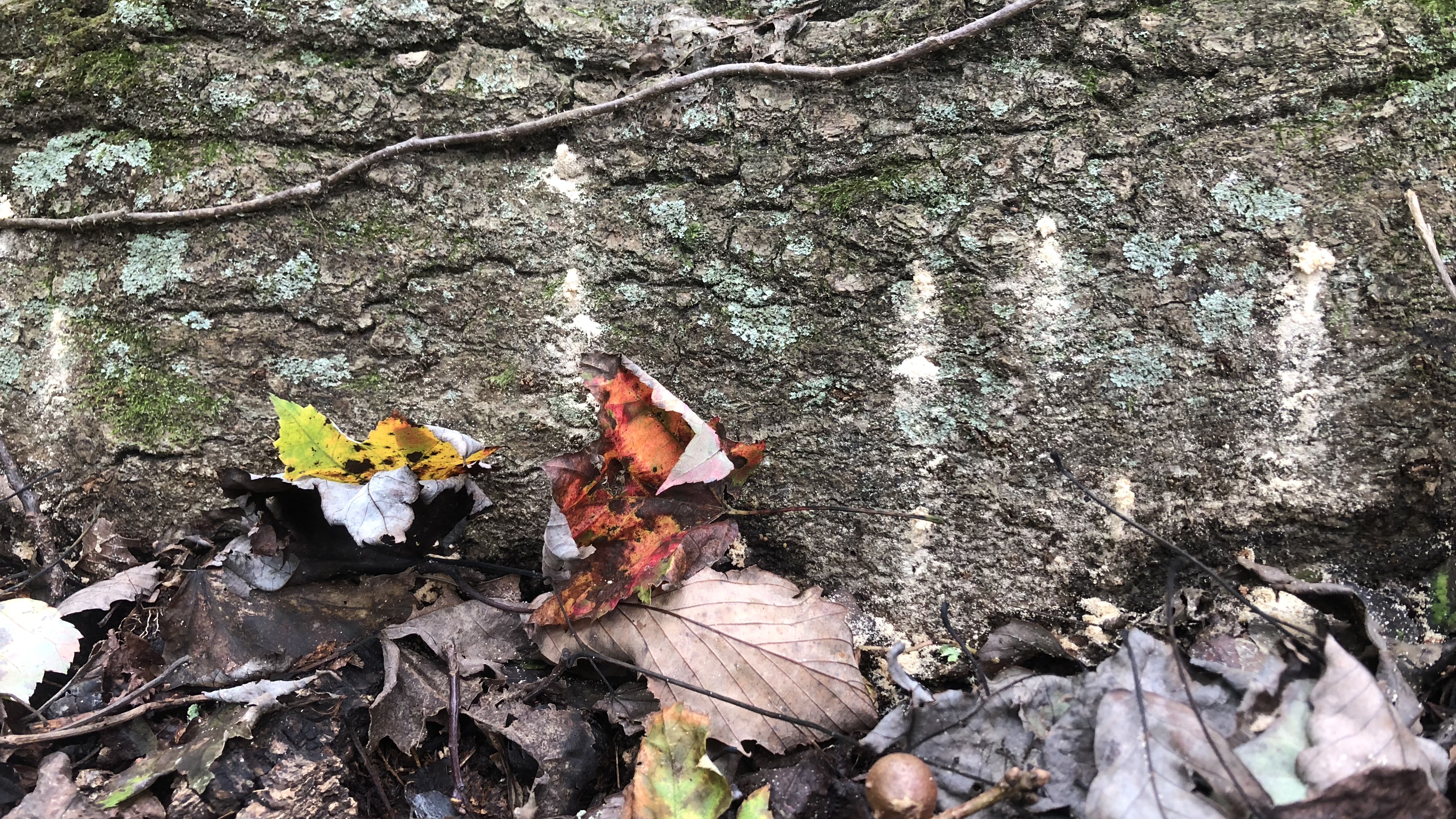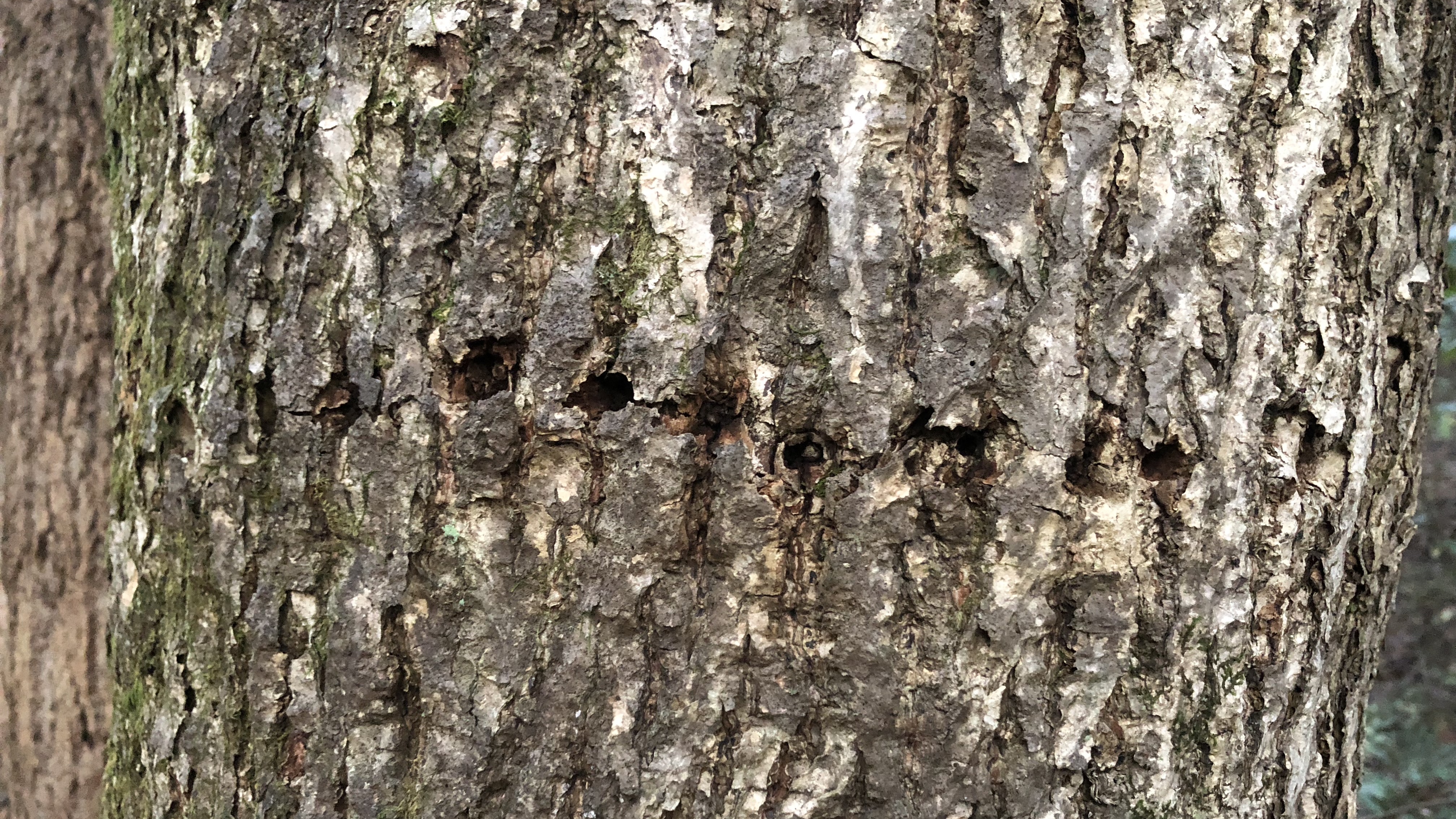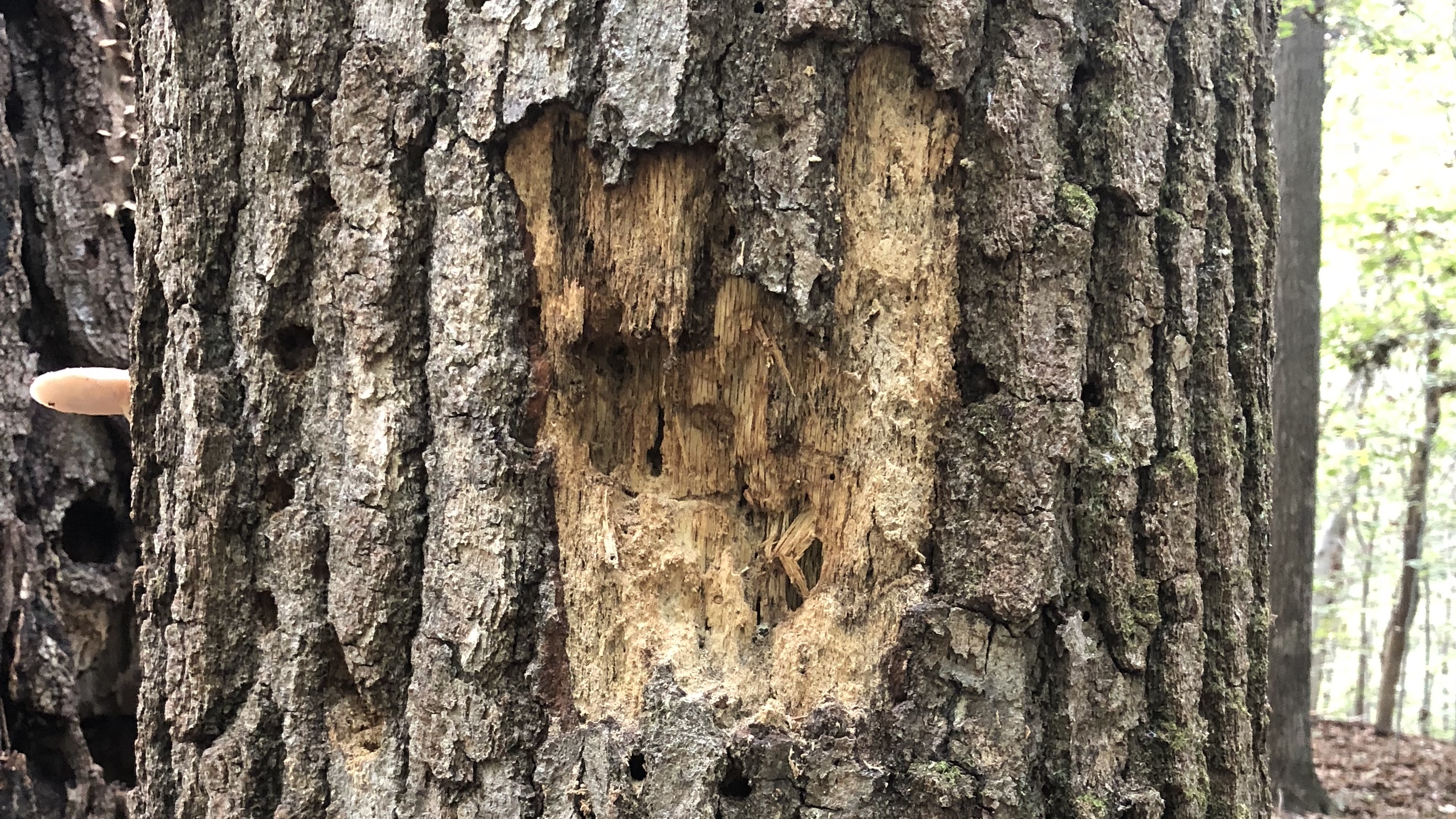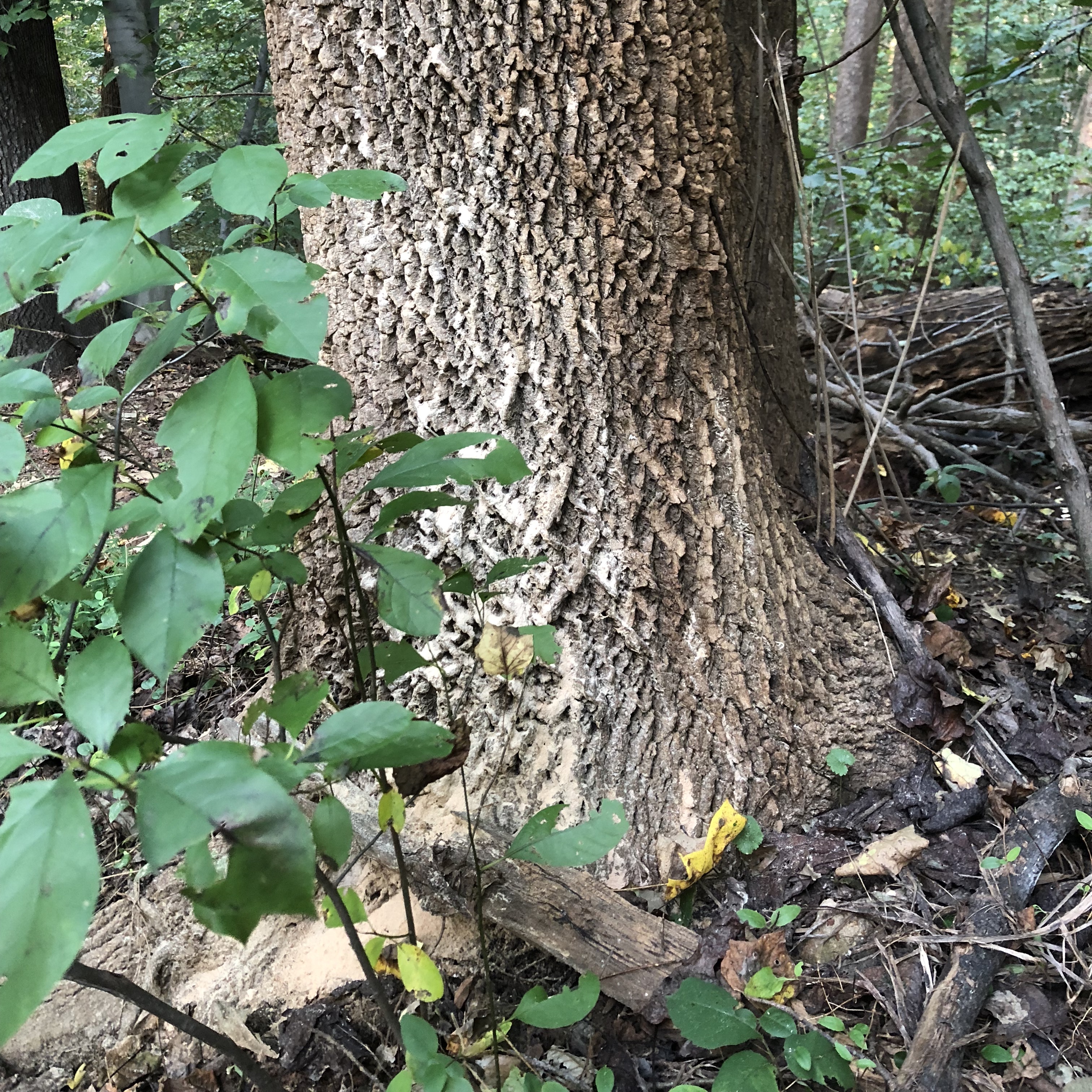There are all sorts of pests in the environment that do damage to trees. Most of these pests rarely attack healthy trees. They usually affect trees that are in decline or under some sort of stress. Droughts, excessive heat, too much water, and damaged limbs cause stress to trees and can make them susceptible to secondary insect damage. The image above shows sawdust on the trunk of the tree and it is probably the work of some type of clearwing moth or flathead borer.
Random Borer Holes

Borer Facts
Borers are beetles or clear-winged moths that spend part of their larval or adult life stage feeding inside roots, trunks, or branches or they tunnel into the heartwood.
They cause a range of damage in a wide range of plants, not just trees. The most famous ones around this area are the emerald ash borer which decimated the Ash trees in a very short period of time. They bored under the bark causing extensive damage and ultimately death.
Evidence of borers can be weepy sap flow where it shouldn't be or sawdust as is shown in this photo.
Borers can disrupt the flow of water and nutrients in the trunk, resulting in tissue death.
Borers can be identified by the type of tree attacked and the location of the damage. If you suspect borers are attacking your trees, it's best to get a professional to determine the best course of action. The extent of the infestation along with the general health of the tree will help guide your decision. Obviously the larger the infestation, the more structural damage, the more difficult it will be for the tree to recover.

Which came first the borer or the sapsucker?

Horizontal rows of sapsucker damage
This is most likely the work of a sapsucker, a bird that feeds on the sap of trees. Usually the holes are in horizontal or vertical rows. These holes are also typically larger than borer holes. Once sapsuckers create holes drilling for sap, then it can attract damaging insects. The sapsucker may then start feeding on the insects too. Sometimes it's hard to tell what came first, the sapsucker or the borer!
Extensive woodpecker damage

Stages of Woodpecker Damage
If you look closely, you can see the original horizontal row of sapsucker holes. The middle hole shows what more extensive woodpecker damage looks like. Borers are usually not a good sign because they mostly attack trees that are in a weakened state. Although the work of sapsuckers isn't necessarily detrimental, it can open up wounds for invasive pests to attack such as borers.
Take Away: If you notice sawdust, small random holes, or small rows of vertical or horizontal holes in one of your trees, it is probably worth getting an expert to assess the tree's health.
References:
Entomology at the University of Kentucky
